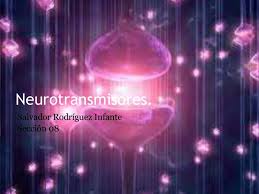Neurotransmisores

Son agentes químicos del cerebro actúan en lugares específicos; hay unos cincuenta, pero los más conocidos son:
Serotonina, Dopamina, Noradrenalina, Acetilcolina, Encefalinas y Endorfinas, Glutamato, Oxido Nítrico
SEROTONINA
Muy conocido este neurotransmisor desde la aparición de Prozac, se conoce como el agente químico del bienestar, dado su efecto sobre el estado de ánimo y la ansiedad; los altos niveles de serotonina se asocian con serenidad y optimismo.
Pero también influye en otras áreas como son el sueño, el apetito, el dolor y la presión arterial.
Respecto a los cambios en los niveles de serotonina, los niveles bajos se asocian a trastornos como la esquizofrenia, trastornos obsesivo-compulsivos, depresión, agresividad, ansiedad, insomnio, etc…. incluso hiperactividad. Cuando aumenta la serotonina se produce mayor concentración, mejora la autoestima, la persona esta relajada, con sensación de bienestar; el estrés, cambios hormonales en los estrógenos y cambios de niveles de azúcar alteran los niveles de serotonina.
¿Como aumentar los niveles de serotonina sin tratamiento?, de forma natural, con prácticas de técnicas de relajación, yoga, meditación, etc… hacer ejercicio con cierta regularidad, pasear, bailar, andar al aire libre, proyectar ideas nuevas como viajar.
A nivel de dietas el triptófano es un precursor de la serotonina, es un aminoácido que no produce el cuerpo y que debe tomarse en la dieta diaria y lo encontramos en leche, huevos, pavo, soja plátanos, leguminosas, pastas, arroz, cereales, pollo, queso y en muchos más alimentos.
Las semillas de equiliffonia y de simplicifolia, es una sustancia que sirve de nexo entre el triptófano y la serotonina, es rica en cinco hidrotriptófanos (htp) y de nexo entre la serotonina y el triptófano.
Entre las funciones de la serotonina, están el actuar sobre el reloj interno de nuestro cuerpo, en el sueño-vigilia, también coordina la hormona del estrés, y la temperatura corporal.
Los hombres producen un 50% más de serotonina que las mujeres, por eso ellas son más sensibles a los cambios de niveles de serotonina.
La serotonina interviene en regular el apetito, la ansiedad, en las funciones perceptivas y cognitivas, el deseo sexual, en la actividad motora.
Se ha visto que, como otros neurotransmisores como la noradrenalina y la dopamina, está muy relacionado con el miedo y con la ansiedad.
La fibromialgia se da en personas con niveles bajo de serotonina, las migrañas, los estados de depresión, de ansiedad. Las migrañas se producen porque los vasos se dilatan
Y se hinchan.
Durante las estaciones menos soleadas la serotonina baja, y hay más tendencia a la depresión, se condiciona con la luz que recibe el organismo; también influye en el apetito sexual, produciendo sensación de bienestar y felicidad, como consecuencia hay más serotonina libre funcionando por el cerebro.
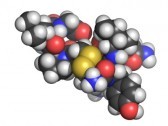
A partir de la serotonina la glándula pineal produce la melatonina, es la encargada de regular el sueño; la serotonina aumenta al atardecer y se mantiene alta, hasta el amanecer, a partir de ahí empieza a descender.
El tratamiento con antidepresivos bloquea la recaptación de la serotonina, y se consigue aumentar el nivel serotonina; los nuevos antidepresivos, los inhibidores selectivos de la recaptación de serotonina (ISRS), deben de ser elegidos por un especialista según la sintomatología presentada, dada la variedad de ellos, en la mayoria de los casos es combinado con psicoterapia, y deben tener un seguimiento para irlos retirando. hay personas que entran en los antidepresivos, sobre todo en los modernos y no sale.
Los antidepresivos antiguos son por ejemplo los tricíclicos, aunque cada vez se utilizan menos, su prescripción es sólo en determinados casos, como depresiones graves o suicidio
La gran mayoría de la serotonina es producida por las neuronas, así como por las células del intestino.
Es un neurotransmisor responsable de los movimientos corporales.
Regula los niveles de respuesta en muchas partes del cerebro, y es de vital importancia para la motivación física, participan en elevar el ánimo, aumentar las defensas del sistema inmune, aumentar el impulso sexual, así como la esperanza del tiempo de vida.
Los niveles demasiado altos se asocian a la esquizofrenia, y pueden producir alucinaciones; los niveles bajos se asocian a descontrol y descoordinación muscular, se relaciona en la enfermedad de Parkinson, más típica de ancianos, sus síntomas son rigidez muscular, dificultad de movimientos voluntarios, movimiento lento, temblor constante.
Se cree que los alucinógenos actúan sobre el sistema dopaminérgico.
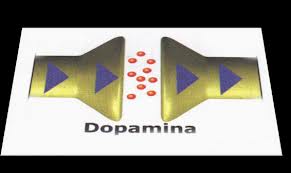
Respecto a la medicación para el aumento de la dopamina, se ha visto que, los inhibidores de la recaptación de dopamina y noradrenalina (IRDN) para el
tratamiento de la depresión han mostrado muchos menos efectos adversos que los fármacos serotoninérgicos, que actualmente son la indicación de primera elección para este tipo de patología en España.
Es un agente químico excitatorio, aumenta el nivel de respuesta física, mental y levanta el ánimo.
La noradrenalina nos hace recordar acontecimientos tanto buenos como malos, felices como traumáticos.
En el ejercicio físico intenso, se libera adrenalina y noradrenalina; tanto un neurotransmisor como otro consiguen la oxidación de los triglicéridos en ácidos grasos y glicerol, liberándose a la sangre.
Su producción se concentra en un área del cerebro, llamada locus coeruleus, que es uno de los candidatos putativos a centro cerebral del placer.
Y los inhibidores de la recaptación de serotonina y noradrenalina (IRSN), aumentan los niveles de los dos neurotransmisores.
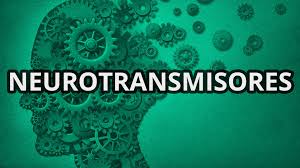
ACETILCOLINA
Regula la actividad en áreas del cerebro relacionadas con la atención, la memoria y el aprendizaje; por ejemplo, pacientes que sufren de Alzheimer tienen bajos niveles de acetilcolina en la corteza cerebral, los fármacos que aumentan su acción pueden mejorar la memoria en este tipo de pacientes. Acetilcolinasa, fue el primer neurotransmisor en ser descubierto en el año 1921, por un biólogo alemán, además de regular en el cerebro áreas relacionadas con la atención, la memoria y el aprendizaje, por ejemplo en pacientes, que sufren Alzheimer, se ha visto que tienen bajo niveles de acetilcolinasa, en la corteza cerebral, pueden perder hasta un 90% de esta sustancia, que con los fármacos adecuados se puede mejorar.
Se ha visto que tiene otras funciones, como participar en la fase del sueño REM, también se encuentra en neuronas sensoriales del sistema nervioso autónomo, y estimulación de los músculos, incluso los gastrointestinales.
La acetilcolina, participa en la memoria y en los recuerdos; en niveles bajos influye en la falta de concentración y en disfunción cognitiva.
Los niveles de este neurotransmisor se pueden restablecer a través de la colina, habría que medirla y saber que está bajo, se puede tomar en forma de lecitina, el tipo de colina que mas necesita el cerebro es la fosfatidilcolina que componen las neuronas, la dieta media de lecitina al día que se toma es de un gramo, pero se puede llegar 12 gramos al día; se ha visto que la lecitina debe acompañarse de vitamina C en dosis de 60 miligramos y de vitamina B5, de 5 a 10 miligramos. La vitamina B6, con todos estos elementos, hace que se sintetice en nuestro organismo la acetilcolina.
ENDORFINAS
Son opiáceas endógenos, que como los fármacos de este nombre, reducen la tensión nerviosa, regulan el dolor, y dan sensación de calma.
También deprimen funciones físicas como la respiración y pueden producir dependencia.
Las beta-endorfinas, además de modular la percepción del dolor, como ya hemos dicho, influyen sobre la sensación de hambre, regulan la reproducción y cumplen otras muchas funciones aún no bien definidas.
Con el deporte, actividades gratificantes, o simplemente la risa, el organismo produce estas sustancias químicas, que estimulan el sistema nervioso, y crean una respuesta física y emocional, que deriva en sensación de bienestar.
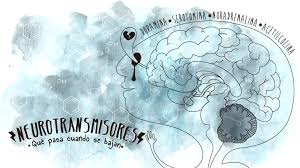
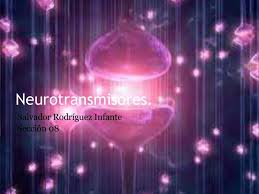
Después de la practica de un deporte intenso, el hecho de sentirnos mejor tiene una base fisiológica: es debido a que la parte derecha del cerebro (responsable de las emociones) predomina sobre la izquierda (la razón o la lógica) y eso hace que nos sintamos mejor.
GLUTAMATO
Glutamato es un pariente excitatorio del GABA. Es el neurotransmisor más común en el sistema nervioso central, y es de destacar su papel en la memoria. Curiosamente, el glutamato es realmente tóxico para las neuronas, y un exceso las puede matar.
Algunas veces el daño cerebral, o un golpe pueden llevar a un exceso de éste neurotransmisor, y terminar con muchas más células cerebrales, siendo su muerte debida al propio trauma. La ALS, más comúnmente conocida como enfermedad de Lou Gehrig, está provocada por una producción excesiva de glutamato.
Es un neurotransmisor mediador de informacion sensorial, motora, cognitiva y emocional.
Tiene que ver en formaciones de memoria.
Interviene el Glutamato, en el 80% de las sipnasis del cerebro, asi como en la plasticidad, en los procesos de aprendizaje.
Es precursor del GABA, el principal neurotransmisor inhibitorio del SNC.
Relacionado con patologias como el Alzheimer, es una diana farmacologica.
Interviene en el proceso de la respiración.
OXIDO NITRICO
El oxido nítrico, es otro neurotransmisor, ha sido el último descubierto, es un gas que se obtiene a partir del aminoácido arginina, participa en la regulación del diámetro de los vasos sanguíneos, interviene también en la función de la erección del pene, se ha visto en terapia sexual. La viagra, esta compuesta de oxido nitrico.
Esta implicado como neurotransmisor en la memoria y en el sueño.
El NO, Monoxido de nitrogeno,actua sobre el sistema inmune, sobre erradicar celulas cancerigenas.Regula los procesos inflamatorios, y regula prevenir la coagulación.
Tiene que ver con la motilidad gastrica, y se usa en circuitos de deportistas, ya que aun¡menta la resistencia y la fuerza, y el desarrollo muscular.
Es neurotransmisor y neuromodulador
Los efectos entre plantas para depresión o ansiedad, y antidepresivos, interactuan y producen problemas serios, las plantas no son inocuas, tienen su función si coges una via, no de debes juntarlo, porque conseguiras estar mal.
palabras clave: neurotransmisores, serotonina, noradrenalina, dopamina, glutamato, acido nitrico, endorfinas acetilcolinasa, encefalinas.
Es también un neurotransmisor excitatorio, de vital importancia para la formación de las conexiones entre las neuronas, que son la base del aprendizaje y de la memoria a largo plazo.
palabras claves:neurotransmisores, dopamina, serotonina, noradrenalina, acido nitrico, glutamato, endorfinas, prozac,acetilcolina, encefalinas, agentes quimicos, cerebro, triptofano,vigilia-sueño, reloj interno, antidepresivos, antidepresivos inhibidores de la recaptación de la serotonina (ISRS), deseo sexual, terapia psicológica, terapia individual, terapia de pareja, terapia de familia, personalidad, tests, trastornos de personalidad, alimentación, juego, ansiedad, depresión, trastorno mental grave, terapia cognitivo-conductual, hipnosis, regresiones, terapia constructivista, trastornos emocionales, trastornos en la infancia, agorafobia, hiperactivdad, terapia sexual, depresión infantil, ansiedad infantil, trastornos de conducta, relajación, trastronos en el estado de ánimo, distimia, trastorno bipolar, trastorno depresivo mayor, trastorno mixto depresivo-ansioso, DSM-V; DSM-IV-TR. Manual de psiquiatria, Psychology, clinical psychology, neurotransmitters, dopamine, serotonine, noradrenalina, nitric acid, glutamate, endorphins, prozac, acetilcolina, encefalinas, chemical agents, brain, triptofano, wake – dream, internal clock, antidepressants, inhibiting antidepressants of the recapture of the serotonine (ISRS), sexual desire, psychological therapy, individual therapy, therapy of pair, therapy of family, personality, tests, disorders of personality, supply, game, anxiety, depression, mental serious disorder, cognitive – behavioral therapy, hypnosis, regressions, therapy constructivista, emotional disorders, disorders in the infancy, agoraphobia, hiperactivdad, sexual therapy,Infantile depression, infantile anxiety, disorders of conduct, easing, trastronos in the state of mind, distimia, two-pole disorder, depressive major disorder, mixed depressive – anxious disorder, DSM-V; DSM-IV-TR. Manual of psychiatry
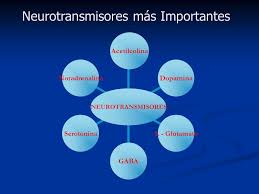
GLUTAMATO
Glutamato es un pariente excitatorio del GABA. Es el neurotransmisor más común en el sistema nervioso central, y es de destacar su papel en la memoria. Curiosamente, el glutamato es realmente tóxico para las neuronas, y un exceso las puede matar.
Algunas veces el daño cerebral, o un golpe pueden llevar a un exceso de éste neurotransmisor, y terminar con muchas más células cerebrales, siendo su muerte debida al propio trauma. La ALS, más comúnmente conocida como enfermedad de Lou Gehrig, está provocada por una producción excesiva de glutamato.
ACIDO NITRICO
El ácido nítrico, es otro neurotransmisor, ha sido el último descubierto, es un gas que se obtiene a partir del aminoácido arginina, participa en la regulación del diámetro de los vasos sanguíneos, interviene también en la función de la erección del pene, se ha visto en terapia sexual.
Los efectos entre plantas para depresión o ansiedad, y antidepresivos, interactuan y producen problemas serios, las plantas no son inocuas, tienen su función si coges una via, no de debes juntarlo, porque conseguiras estar mal.
palabras clave: neurotransmisores, serotonina, noradrenalina, dopamina, glutamato, acido nitrico, endorfinas acetilcolinasa, encefalinas.

